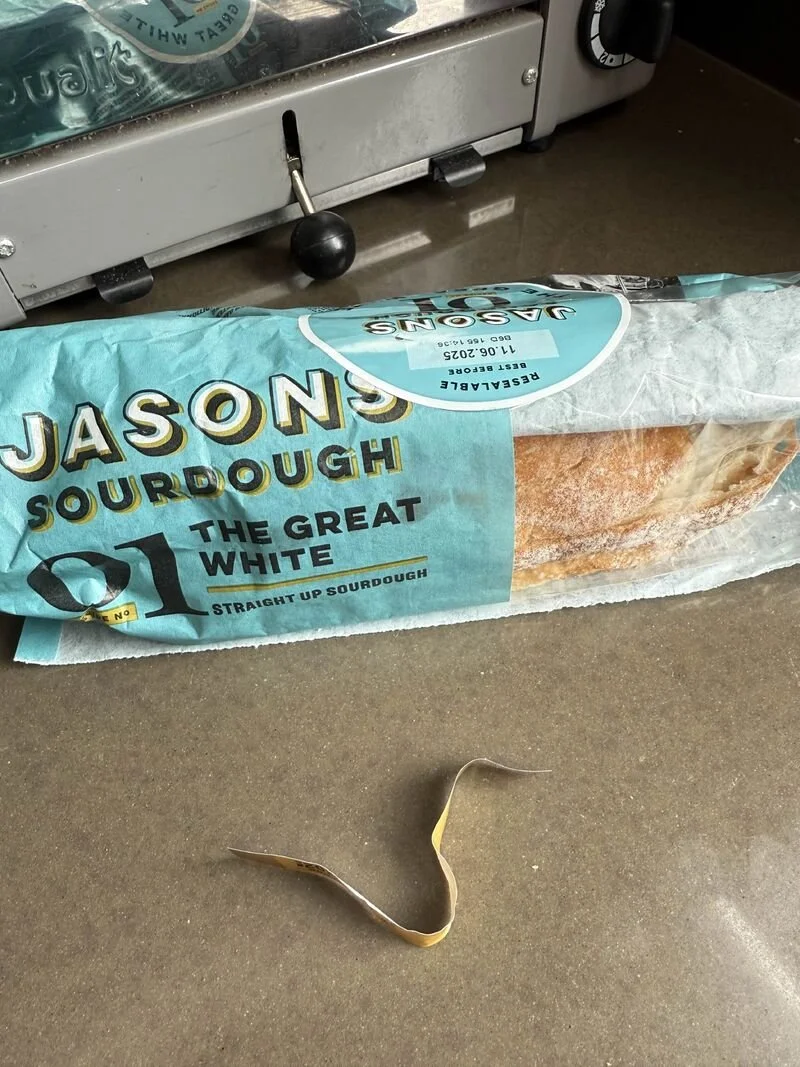SBR 62: Lessons from Jason’s Sourdough pack design.
Why structure beats spin at the shelf
Shoppers form a first impression in as little as two to seven seconds, and up to 70 percent of brand choices are still made in-store. In that blink-and-buy window, your structural packaging design is both billboard and product demo—long before any copy or campaign can speak for you.
Case study: Jason’s Sourdough and its TOP LOADING bread bag
Jason’s took a humble loaf and turned the bag itself into a silent salesperson:
Paper bag with clear window – lets shoppers judge crust quality, reinforcing craft credentials.
Premium matte substrate – a tactile cue that says “artisan”, not “commodity”.
Full-width resealable label – one-pull close that protects freshness and respects real-life mornings.
Top-load orientation with roll-down mouth – mirrors the ritual of a traditional bakery bag, keeps crumbs off the counter, and feels authentically handcrafted.
Every interaction—from shelf lift to final slice—proves the brand promise without an extra penny of media spend.
The 4F framework for structural success
Feel – choose materials and textures that instantly convey quality.
Function – design an open-serve-close cycle that works one-handed.
Freshness – build in features that actively extend product life.
Familiarity – echo category rituals to trigger subconscious trust.
Jason’s nails all four, turning its pack into a brand moat.
How to brief your next pack
Map the full usage journey and highlight friction points.
Prototype in real kitchens; time consumers opening, serving, resealing.
Translate “fewer stale slices” into repeat-purchase numbers to win finance support.
Validate recyclability or reuse early to avoid greenwashing claims.
Align pack graphics with structure so the story stays consistent at every touchpoint.
If you’re ready to turn your packaging into your best sales rep, get in touch with the BBD team for a structural design sprint and consumer research.

